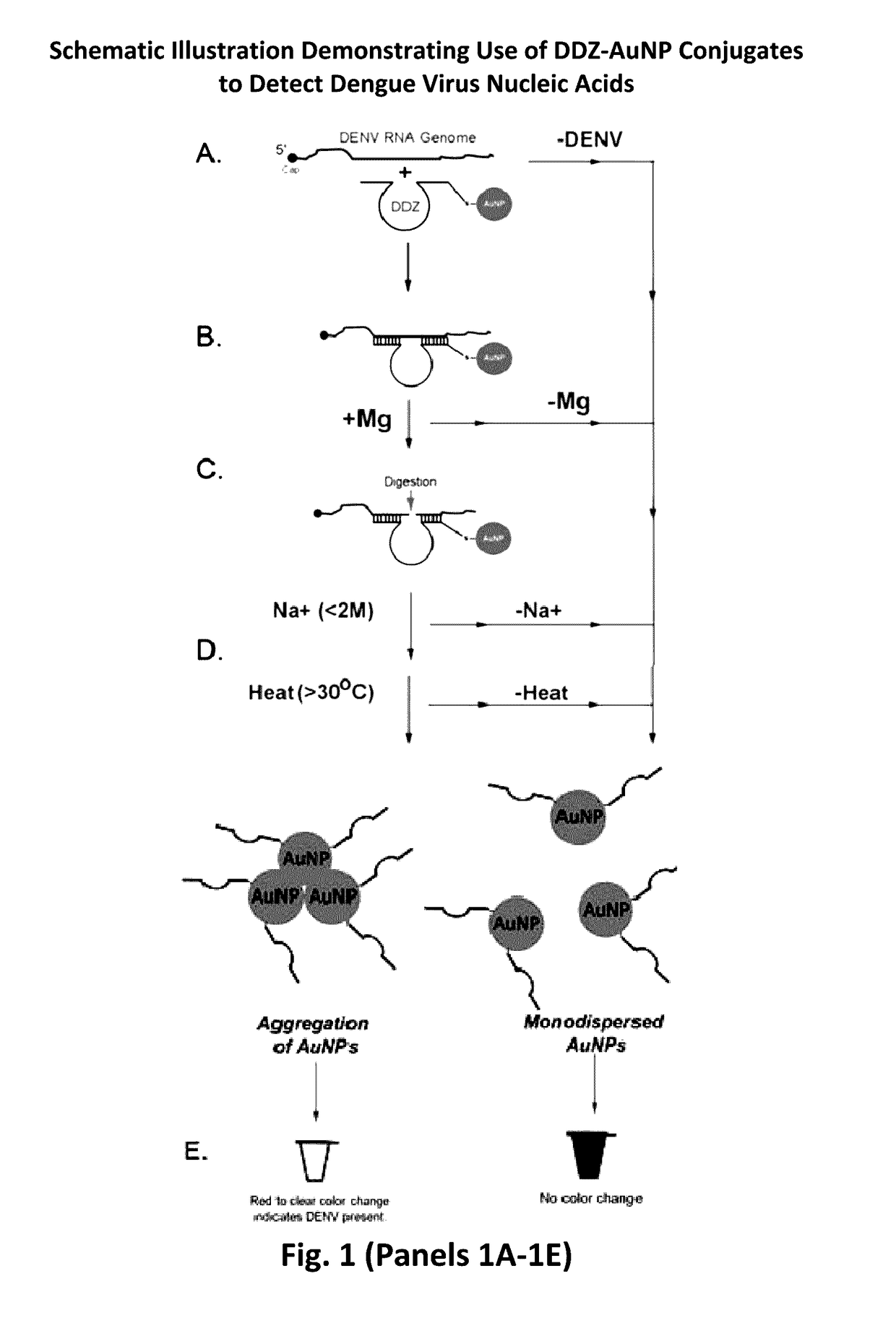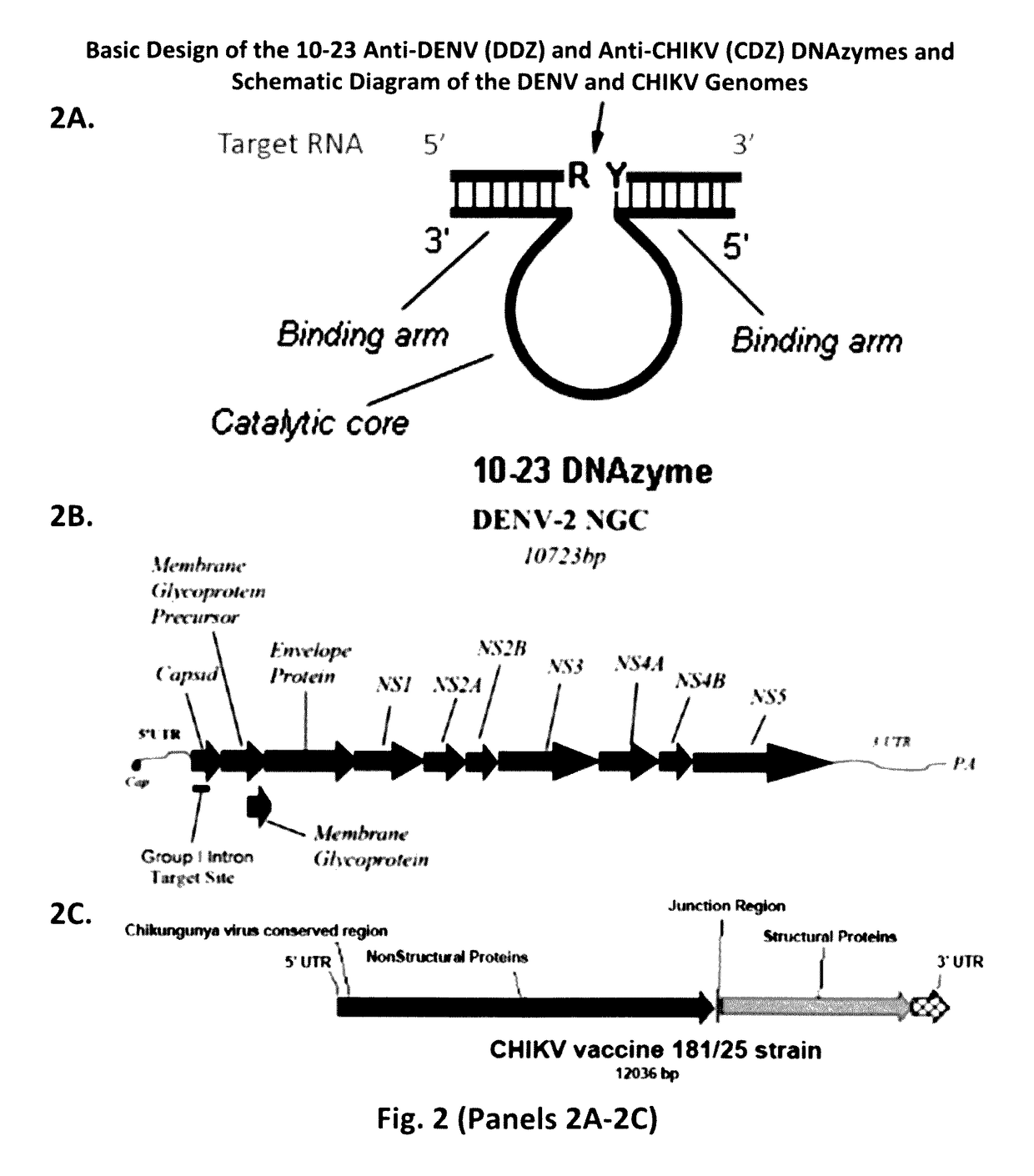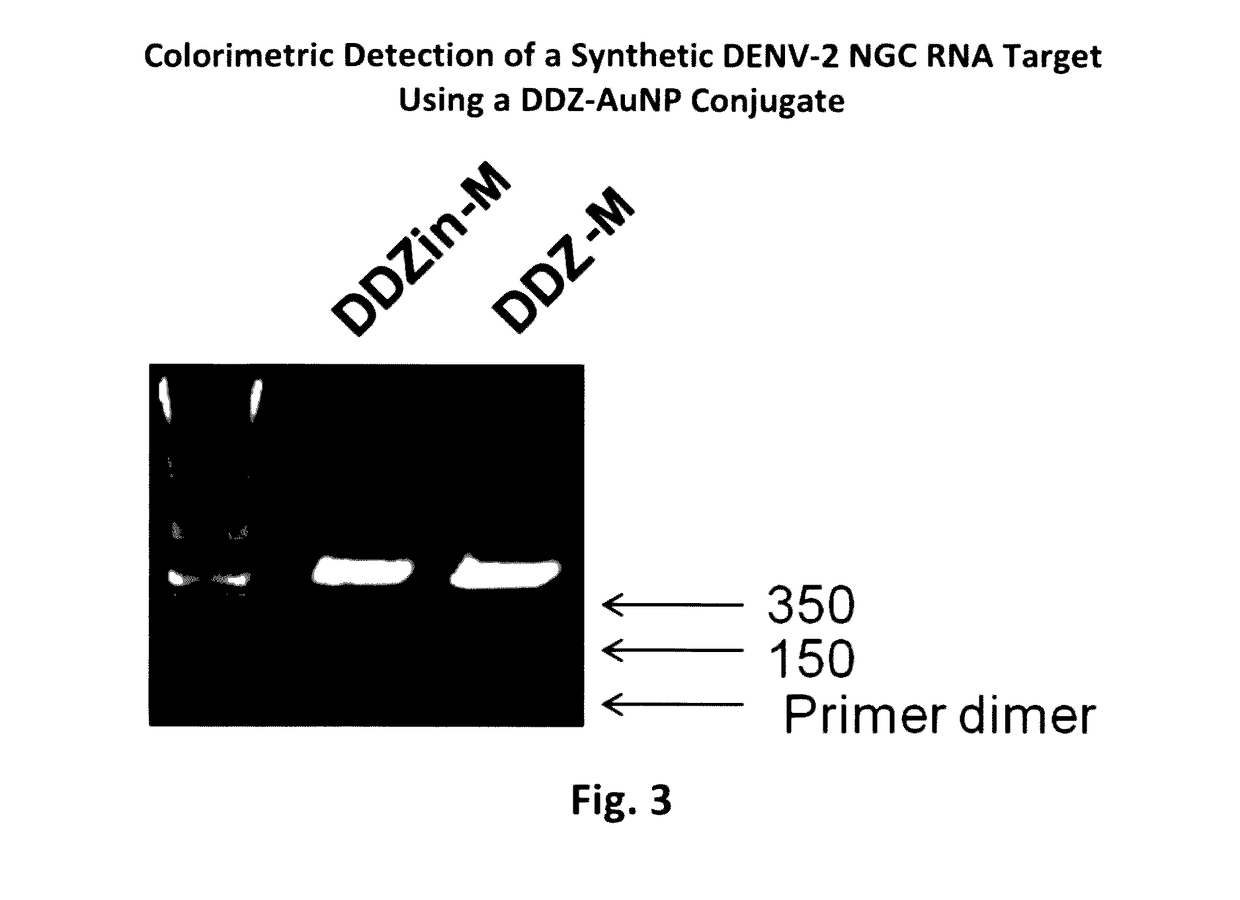Dnazyme-nanoparticle conjugates and methods of use thereof
a technology of nanoparticles and dnazyme, which is applied in the field of dnazyme, can solve the problems outbreaks of denv in regions, and limited detection of mosquito-borne viruses in infected humans
- Summary
- Abstract
- Description
- Claims
- Application Information
AI Technical Summary
Benefits of technology
Problems solved by technology
Method used
Image
Examples
example 1
Method of Detecting Dengue Virus with DNAzyme Nanoparticle Conjugates
Results
Overview of the Colorimetric Detection of DENV by DNAzyme Activity Coupled with Non-Crosslinking AuNP Aggregation (DDZ-AuNP)
[0091]The dengue virus detection method described below (see FIG. 1) is based upon RNA aptazyme-mediated detection of small molecules, such as theophylline [Ferapontova and Gothelf (2009)]. A key limitation of using RNAzymes and aptazymes for virus detection is the inherent instability these catalytic RNAs, increasing the attractiveness of DNAzymes for use in detection assays.
[0092]The colorimetric detection of DENV by DDZ-AuNP can be divided into three phases: targeting / cleavage of the DENV RNA genome by DDZ, activation of AuNPs, and aggregation of AuNPs and detection (FIG. 1). In the presence of DENV the 5′ and 3′ arms of DDZ bind to the 3′ and 5′ ends of a fully conserved segment that includes the 5′-3′ CS region, respectively, and in the presence of Mg2+ and heat (37° C.) the viral ...
example 2
Method of Detecting Chikungunya Virus with DNAzyme Nanoparticle Conjugates
Introduction
[0128]Chikungunya virus (CHIKV) was first detected in Tanzania in 1952, and is an emerging human pathogen responsible for significant disease outbreaks annually [Higgs and Ziegler (2010)]. Aedes aegypti, Ae. albopictus, and Ae. vigilax serve as the principle mosquito vectors for CHIKV, while also playing a role in dengue virus dissemination [van den Hurk (2009); Jansen et al. (2009)].
[0129]The increasing incidence of this emerging pathogen necessitate the need for a rapid and cost effective CHIKV detection method that can facilitate surveillance of mosquito populations. In Example 1, we described a simple, rapid, and cost effective gold nanoparticle coupled DNAzyme-based detection assay for dengue viruses (later published as Carter et al, 2013). In this example, we adapted this technology for the rapid, sensitive, and cost effective detection method for CHIKV, that couples the robust catalysis of a...
PUM
| Property | Measurement | Unit |
|---|---|---|
| temperature | aaaaa | aaaaa |
| temperature | aaaaa | aaaaa |
| diameter | aaaaa | aaaaa |
Abstract
Description
Claims
Application Information
 Login to View More
Login to View More - R&D
- Intellectual Property
- Life Sciences
- Materials
- Tech Scout
- Unparalleled Data Quality
- Higher Quality Content
- 60% Fewer Hallucinations
Browse by: Latest US Patents, China's latest patents, Technical Efficacy Thesaurus, Application Domain, Technology Topic, Popular Technical Reports.
© 2025 PatSnap. All rights reserved.Legal|Privacy policy|Modern Slavery Act Transparency Statement|Sitemap|About US| Contact US: help@patsnap.com



